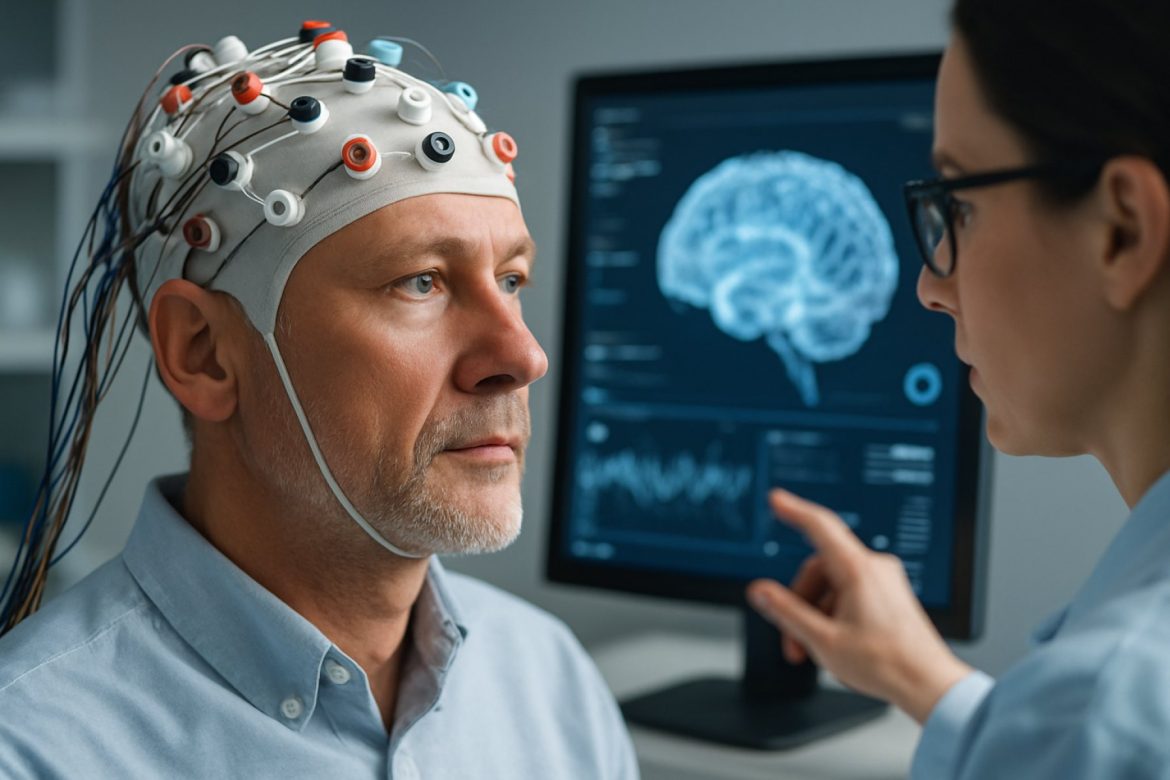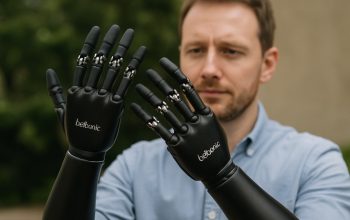2025 Bidirectional Brain-Computer Interface Development Report: Market Dynamics, Technology Breakthroughs, and Strategic Forecasts. Explore Key Trends, Regional Growth, and Competitive Insights Shaping the Next 5 Years.
- Executive Summary & Market Overview
- Key Technology Trends in Bidirectional Brain-Computer Interfaces
- Competitive Landscape and Leading Innovators
- Market Growth Forecasts (2025–2030): CAGR, Revenue, and Volume Analysis
- Regional Market Analysis: North America, Europe, Asia-Pacific, and Rest of World
- Future Outlook: Emerging Applications and Investment Hotspots
- Challenges, Risks, and Strategic Opportunities
- Sources & References
Executive Summary & Market Overview
Bidirectional brain-computer interfaces (BCIs) represent a transformative leap in neurotechnology, enabling two-way communication between the brain and external devices. Unlike traditional BCIs, which primarily focus on decoding neural signals to control computers or prosthetics, bidirectional systems also deliver sensory feedback or stimulation to the brain, creating a closed-loop system. This capability is pivotal for applications ranging from advanced neuroprosthetics to cognitive enhancement and the treatment of neurological disorders.
The global market for bidirectional BCIs is poised for significant growth in 2025, driven by rapid advancements in neural engineering, miniaturization of implantable devices, and increasing investment from both public and private sectors. According to MarketsandMarkets, the overall BCI market is projected to reach $3.3 billion by 2027, with bidirectional systems expected to capture a growing share due to their superior functionality and expanding clinical applications.
Key industry players such as Neuralink, Blackrock Neurotech, and Synchron are accelerating the development of bidirectional BCIs, with several clinical trials underway targeting conditions like paralysis, epilepsy, and sensory restoration. For instance, Neuralink has demonstrated real-time bidirectional communication in animal models, while Blackrock Neurotech has advanced human trials for restoring tactile sensation in prosthetic limbs.
The market landscape is further shaped by regulatory progress and growing acceptance of implantable neurotechnology. The U.S. Food and Drug Administration (FDA) has granted breakthrough device designations to multiple bidirectional BCI projects, expediting their path to commercialization (U.S. Food and Drug Administration). Additionally, increased funding from agencies such as the National Institutes of Health and the Defense Advanced Research Projects Agency (DARPA) is catalyzing innovation and supporting early-stage startups.
In summary, 2025 marks a pivotal year for bidirectional BCI development, characterized by robust R&D activity, strategic partnerships, and a favorable regulatory environment. As clinical validation progresses and device capabilities expand, the sector is expected to transition from experimental applications to broader clinical and consumer adoption, fundamentally reshaping the interface between humans and technology.
Key Technology Trends in Bidirectional Brain-Computer Interfaces
Bidirectional brain-computer interfaces (BCIs) represent a transformative leap in neurotechnology, enabling two-way communication between the brain and external devices. Unlike traditional BCIs, which primarily focus on decoding neural signals to control external systems, bidirectional BCIs also deliver information back to the brain, creating a closed-loop system. This capability is central to next-generation applications in neuroprosthetics, cognitive enhancement, and neurological therapy.
In 2025, several key technology trends are shaping the development of bidirectional BCIs:
- High-Resolution Neural Interfaces: Advances in microelectrode arrays and flexible electronics are enabling more precise recording and stimulation of neural activity. Companies such as Neuralink and Blackrock Neurotech are pioneering high-channel-count implants that can both read and write neural signals with unprecedented fidelity.
- Wireless and Minimally Invasive Systems: The push toward wireless, fully implantable BCIs is reducing infection risks and improving patient comfort. Synchron has demonstrated a stent-based BCI that can be implanted via blood vessels, offering a less invasive alternative to traditional craniotomy-based approaches.
- Closed-Loop Feedback Algorithms: Machine learning and adaptive algorithms are being integrated to interpret neural data in real time and deliver tailored stimulation. This is critical for applications such as adaptive deep brain stimulation (DBS) for Parkinson’s disease, where feedback-driven modulation can optimize therapeutic outcomes (Nature Scientific Reports).
- Multimodal Integration: Combining electrical, optical, and chemical sensing/stimulation modalities is expanding the functional capabilities of BCIs. Research institutions and companies are exploring hybrid systems that can interface with multiple brain regions and types of neural activity (DARPA).
- Scalability and Manufacturability: Efforts are underway to scale up production of high-performance neural interfaces while ensuring biocompatibility and long-term stability. This is essential for moving from experimental devices to widespread clinical and consumer adoption (IDTechEx).
These trends are converging to accelerate the commercialization and clinical translation of bidirectional BCIs, with 2025 expected to see significant milestones in both regulatory approvals and real-world deployments.
Competitive Landscape and Leading Innovators
The competitive landscape for bidirectional brain-computer interface (BCI) development in 2025 is characterized by rapid innovation, significant investment, and a growing number of both established technology giants and specialized startups. Bidirectional BCIs, which enable two-way communication between the brain and external devices, are at the forefront of neurotechnology, promising transformative applications in healthcare, communication, and human augmentation.
Leading the field is Neuralink, which has made headlines for its high-bandwidth, implantable BCI devices. In 2024, Neuralink received FDA approval for human trials, and by 2025, it has advanced its bidirectional interface to support real-time neural feedback, enabling more naturalistic control of prosthetics and digital devices. The company’s focus on miniaturization and wireless data transmission continues to set industry benchmarks.
Another major player is Synchron, whose Stentrode device offers a less invasive approach by utilizing endovascular implantation. Synchron’s technology has demonstrated bidirectional communication capabilities, allowing users to both send commands and receive sensory feedback. The company’s partnerships with major healthcare providers and ongoing clinical trials in the US and Australia have positioned it as a leader in the commercialization of BCIs.
In the academic and research sector, BrainGate remains a pioneer, with its consortium of universities and hospitals pushing the boundaries of bidirectional BCI research. Recent studies have shown improved decoding algorithms and the integration of sensory feedback, which are critical for restoring more natural movement and sensation in patients with paralysis.
- Blackrock Neurotech continues to innovate with its Utah Array platform, focusing on high-resolution neural recording and stimulation. Its devices are used in both clinical and research settings, supporting a range of bidirectional BCI applications.
- CorTec is advancing closed-loop BCI systems, emphasizing real-time adaptive stimulation for therapeutic applications such as epilepsy and chronic pain.
- Paradromics is developing high-data-rate BCIs aimed at restoring communication for people with severe disabilities, with a focus on scalable, bidirectional interfaces.
The competitive landscape is further shaped by strategic collaborations, increased venture capital funding, and regulatory milestones. As the market matures, differentiation is increasingly based on device safety, data fidelity, user experience, and the ability to deliver closed-loop, bidirectional functionality. The next wave of innovation is expected to focus on long-term implant stability, wireless power, and integration with artificial intelligence for adaptive feedback systems.
Market Growth Forecasts (2025–2030): CAGR, Revenue, and Volume Analysis
The bidirectional brain-computer interface (BCI) market is poised for robust expansion between 2025 and 2030, driven by technological advancements, increased investment, and expanding applications in healthcare, neuroprosthetics, and human augmentation. According to projections by MarketsandMarkets, the global BCI market—which includes bidirectional systems enabling both neural signal acquisition and stimulation—is expected to achieve a compound annual growth rate (CAGR) of approximately 15–18% during this period. This growth is underpinned by rising demand for advanced neurotechnologies in both clinical and non-clinical settings.
Revenue forecasts indicate that the bidirectional BCI segment will outpace traditional unidirectional systems, with global revenues projected to surpass $3.5 billion by 2030, up from an estimated $1.4 billion in 2025. This surge is attributed to the increasing adoption of closed-loop BCIs in neurorehabilitation, epilepsy management, and brain-controlled prosthetics, as well as the emergence of consumer applications in gaming and augmented reality (Grand View Research).
Volume analysis suggests a significant uptick in the deployment of bidirectional BCI devices, particularly in North America and Europe, where regulatory frameworks and funding initiatives are more mature. The number of installed bidirectional BCI units is expected to grow at a CAGR of over 20% from 2025 to 2030, with healthcare institutions and research centers accounting for the majority of new installations. The Asia-Pacific region is also anticipated to witness accelerated growth, fueled by government-backed neuroscience programs and increasing investments in digital health infrastructure (Fortune Business Insights).
- Key Drivers: Advances in neural signal processing, miniaturization of implantable devices, and improved biocompatibility.
- Challenges: High development costs, regulatory hurdles, and concerns over data privacy and long-term safety.
- Opportunities: Expansion into mental health monitoring, adaptive neurostimulation, and integration with artificial intelligence for personalized therapies.
Overall, the 2025–2030 period is expected to mark a transformative phase for bidirectional BCI development, with sustained double-digit growth rates and increasing market penetration across medical and consumer domains.
Regional Market Analysis: North America, Europe, Asia-Pacific, and Rest of World
The global bidirectional brain-computer interface (BCI) market is experiencing significant regional differentiation, with North America, Europe, Asia-Pacific, and the Rest of World (RoW) each exhibiting unique growth drivers and challenges as of 2025.
North America remains the dominant region, propelled by robust R&D investments, a strong presence of leading BCI companies, and supportive regulatory frameworks. The United States, in particular, is home to pioneering firms such as Neuralink and Blackrock Neurotech, which are advancing clinical trials and commercial applications for bidirectional BCIs. The region benefits from collaborations between academic institutions and the private sector, as well as significant funding from agencies like the National Institutes of Health. The North American market is further buoyed by a high prevalence of neurological disorders and a growing demand for neuroprosthetics and assistive technologies.
Europe is characterized by a strong emphasis on ethical standards and regulatory oversight, with the European Commission supporting cross-border research initiatives. Countries such as Germany, France, and the UK are investing in neurotechnology clusters and public-private partnerships. The region’s focus on patient safety and data privacy is shaping the development and deployment of bidirectional BCIs, particularly in medical and rehabilitation settings. European companies are also exploring non-invasive and minimally invasive BCI solutions, aiming to address both clinical and consumer markets.
Asia-Pacific is emerging as a high-growth region, driven by increasing healthcare expenditure, a large patient pool, and government-backed innovation programs. China, Japan, and South Korea are at the forefront, with entities like Sinobioway Group and Hitachi investing in BCI research and commercialization. The region is witnessing rapid adoption of BCIs in rehabilitation, gaming, and education, supported by a tech-savvy population and expanding digital infrastructure. However, regulatory harmonization and clinical validation remain ongoing challenges.
- Rest of World (RoW) markets, including Latin America, the Middle East, and Africa, are in nascent stages of BCI adoption. Growth is primarily driven by academic research and pilot healthcare projects, with limited commercial deployment. However, increasing awareness and international collaborations are expected to gradually stimulate market activity in these regions.
Overall, while North America and Europe lead in innovation and regulatory maturity, Asia-Pacific is poised for rapid expansion, and RoW regions are beginning to establish foundational capabilities in bidirectional BCI development as of 2025.
Future Outlook: Emerging Applications and Investment Hotspots
The future outlook for bidirectional brain-computer interface (BCI) development in 2025 is marked by rapid technological advancements, expanding application domains, and intensifying investment activity. Bidirectional BCIs, which enable both the reading of neural signals and the delivery of feedback or stimulation to the brain, are poised to transform not only medical therapeutics but also consumer technology, defense, and industrial sectors.
Emerging applications are particularly prominent in neurorehabilitation, where bidirectional BCIs are being developed to restore motor function in patients with spinal cord injuries or stroke. Companies such as Neuralink and Synchron are advancing implantable devices that facilitate real-time communication between the brain and external devices, with clinical trials underway for restoring movement and communication in paralyzed individuals. In addition, closed-loop BCIs are being explored for the treatment of neurological disorders such as epilepsy, depression, and Parkinson’s disease, with adaptive stimulation protocols that respond dynamically to neural activity (Nature Medicine).
Beyond healthcare, bidirectional BCIs are gaining traction in immersive computing and human augmentation. The gaming and extended reality (XR) industries are investing in non-invasive BCIs to enable more intuitive user interfaces and real-time feedback, with startups like NextMind (acquired by Snap Inc.) and EMOTIV leading the way. Defense agencies, including the Defense Advanced Research Projects Agency (DARPA), are funding research into BCIs for enhanced situational awareness and cognitive augmentation for soldiers.
Investment hotspots in 2025 are concentrated in North America, Europe, and East Asia, with venture capital and strategic corporate investments accelerating. According to Grand View Research, the global BCI market is projected to reach $5.5 billion by 2030, with bidirectional systems representing a significant share of new funding rounds and partnerships. Notably, collaborations between medtech firms, academic institutions, and big tech companies are driving innovation pipelines and regulatory progress.
- Neurorehabilitation and assistive communication devices remain the largest near-term commercial opportunities.
- Consumer and industrial applications are expected to scale as non-invasive technologies mature.
- Ethical, privacy, and regulatory frameworks are emerging as critical factors shaping investment and adoption.
In summary, 2025 is set to be a pivotal year for bidirectional BCI development, with expanding applications, robust investment, and a growing ecosystem of stakeholders accelerating the path from research to real-world impact.
Challenges, Risks, and Strategic Opportunities
The development of bidirectional brain-computer interfaces (BCIs)—systems capable of both reading neural activity and delivering feedback or stimulation to the brain—faces a complex landscape of challenges, risks, and strategic opportunities as of 2025. The technical hurdles remain significant. Achieving high-resolution, real-time communication between the brain and external devices requires advances in materials science, signal processing, and miniaturization. For instance, ensuring long-term biocompatibility and stability of implanted electrodes is a persistent challenge, as immune responses and tissue encapsulation can degrade signal quality over time. Companies like Neuralink and Synchron are investing heavily in novel electrode designs and minimally invasive surgical techniques to address these issues.
Data security and privacy risks are also paramount. Bidirectional BCIs generate and transmit highly sensitive neural data, raising concerns about unauthorized access, data breaches, and potential misuse. Regulatory bodies such as the U.S. Food and Drug Administration (FDA) are increasingly scrutinizing cybersecurity protocols for medical devices, and compliance with evolving standards is both a risk and an opportunity for differentiation in the market.
Ethical and societal risks are intensifying as BCIs move closer to mainstream adoption. The potential for cognitive enhancement, manipulation, or unintended psychological effects has prompted calls for robust ethical frameworks and oversight. Organizations like the World Health Organization (WHO) have issued guidance on neurotechnology governance, emphasizing the need for informed consent, transparency, and equitable access.
Despite these challenges, strategic opportunities abound. The global BCI market is projected to grow at a CAGR of over 15% through 2030, driven by applications in neurorehabilitation, assistive technologies, and even consumer wellness (Grand View Research). Partnerships between technology firms, academic institutions, and healthcare providers are accelerating innovation and clinical validation. Furthermore, the integration of artificial intelligence and machine learning is enhancing the interpretability and adaptability of bidirectional BCIs, opening new frontiers in personalized medicine and human-computer interaction.
In summary, while the path to widespread adoption of bidirectional BCIs is fraught with technical, regulatory, and ethical risks, proactive investment in research, security, and stakeholder engagement presents significant strategic opportunities for industry leaders in 2025 and beyond.
Sources & References
- MarketsandMarkets
- Neuralink
- Blackrock Neurotech
- National Institutes of Health
- Defense Advanced Research Projects Agency
- Nature Scientific Reports
- IDTechEx
- Synchron
- BrainGate
- CorTec
- Paradromics
- Grand View Research
- Fortune Business Insights
- European Commission
- Hitachi
- Neuralink
- Snap Inc.
- World Health Organization (WHO)



